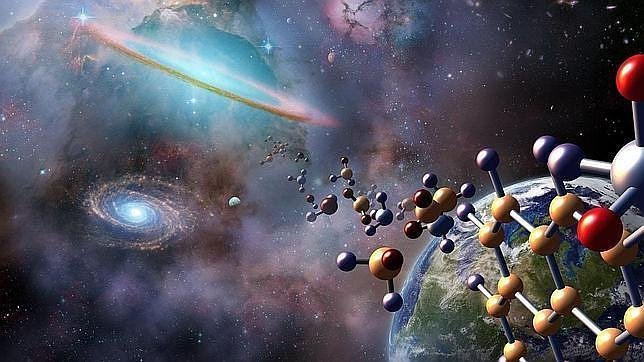
The theory of Panspermia says that the basic elements for the origin of life could be distributed throughout the Universe and reach the Earth embedded in a meteor shower after being fired into space from other planets by the impetus of colossal events like gigantic volcanic eruptions or the collision with an asteroid. This controversial hypothesis raises many doubts to the most skeptical, but some scientists embrace it with fervor. A new study presented at the European Planetary Science Congress, held these days in Madrid, delves into this possibility. According to the researchers, under certain conditions, there is a high probability that life will reach our planet as a cosmic planting. It would have happened during the childhood of the Solar System, when our world and its planetary neighbors inhabited other stars close enough to each other to be able to exchange solid material via asteroids.

According to the authors, the results provide strong support for litopanspermia (from Greek: lithos = stone, bread = all, sperm = origin). Previous research on this phenomenon had suggested that the speed at which objects could travel through space made the probability of being captured by another planet small. However, this new research, based on computer simulations, suggests the possibility of a process called weak transfer, by which solid objects can wander little by little out of the orbit of a celestial body, like a planet, to end up in the Orbit of another, increasing the chances that this process will lead to an exchange of basic elements for life or, perhaps, even microorganisms.
A very likely phenomenon
The research is based on the principles developed by the well known mathematician of Princeton University Edward Belbruno. "Our work says the opposite of most previous jobs," says the scientist. «Litopanspermia could be a very likely phenomenon, and this may be the first study to prove it. If this mechanism is true, it has implications for life in the Universe as a whole. This could have happened anywhere ».
The team observed that slow speeds offer a very high probability of exchange of solid material through weak transfer, and also found that the timing of this change may be compatible with the actual development of the Solar System, as well as with the timing of the first appearance of life on Earth. Researchers believe that the basic forms of life are tough enough to survive interstellar travel and the ultimate impact on a planet.
The study shows that the exchange of material between different planetary systems is likely, but for it to really take place, the material has to land on a planet similar to Earth where life can thrive. "Our study does not prove that the litopanspermia actually happened, but indicates that it is an open possibility," says Amaya Moro-Martín, of the Center for Astrobiology CSIC-INTA and Princeton University.
Read more:
www.vix.com/es/btg/curiosidades/55339/panspermia-la-teoria-cientifica-del-origen-de-la-vida-en-la-tierra-que-afirma-que-todos-somos-extraterrestres
Contrary to what most people are inclined to think there is a good chance that this theory is correct. One of the meteorites that hit the earth at his early stages could have been charged with life or at least the building blocks for life of another planet. Thanks for your post it was very informative